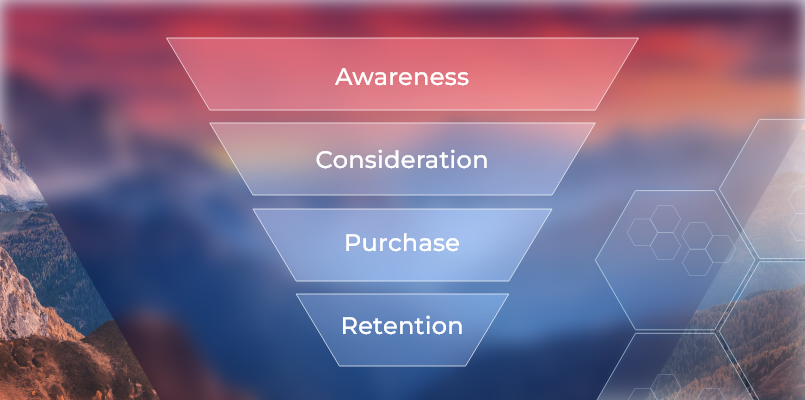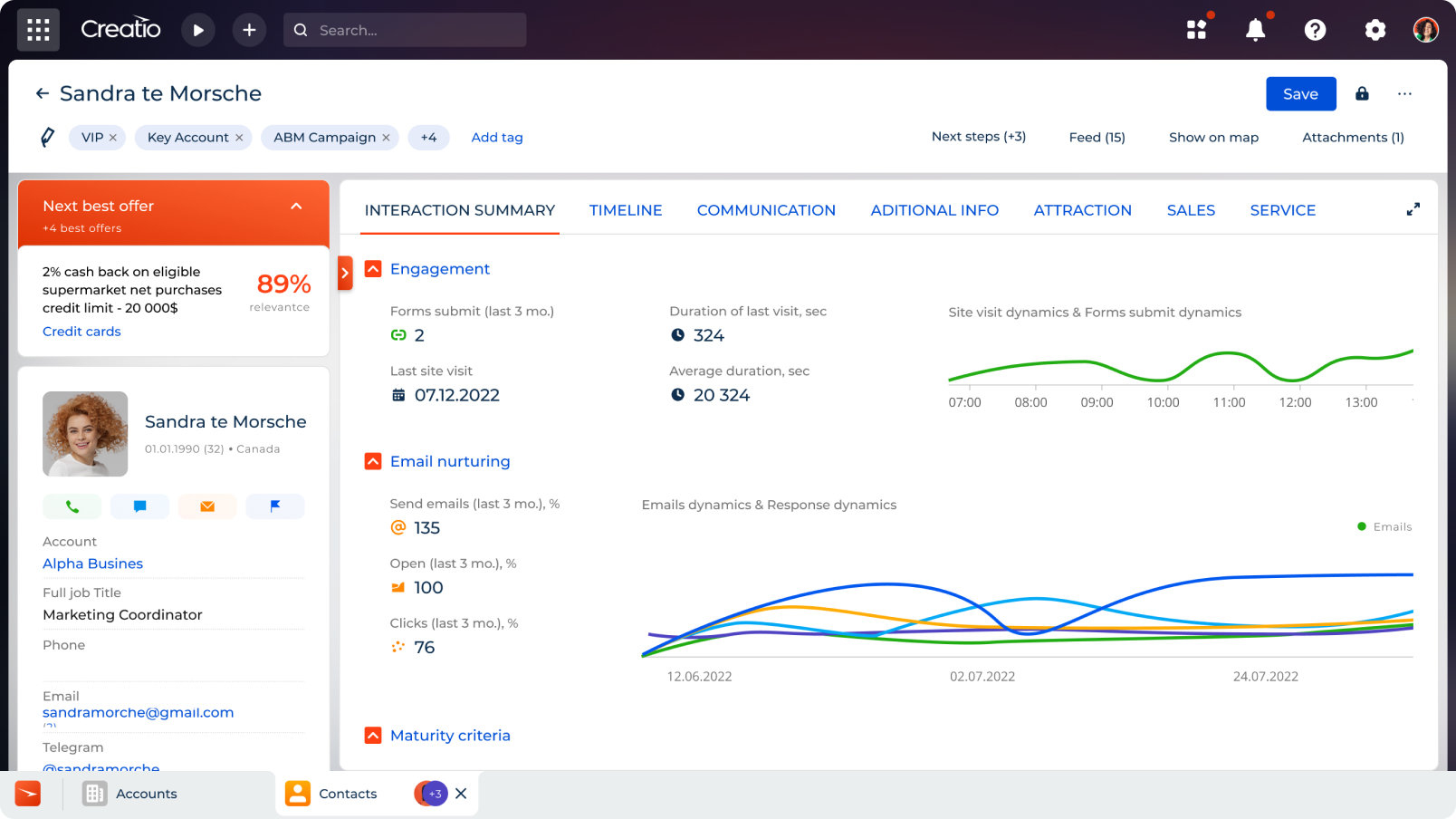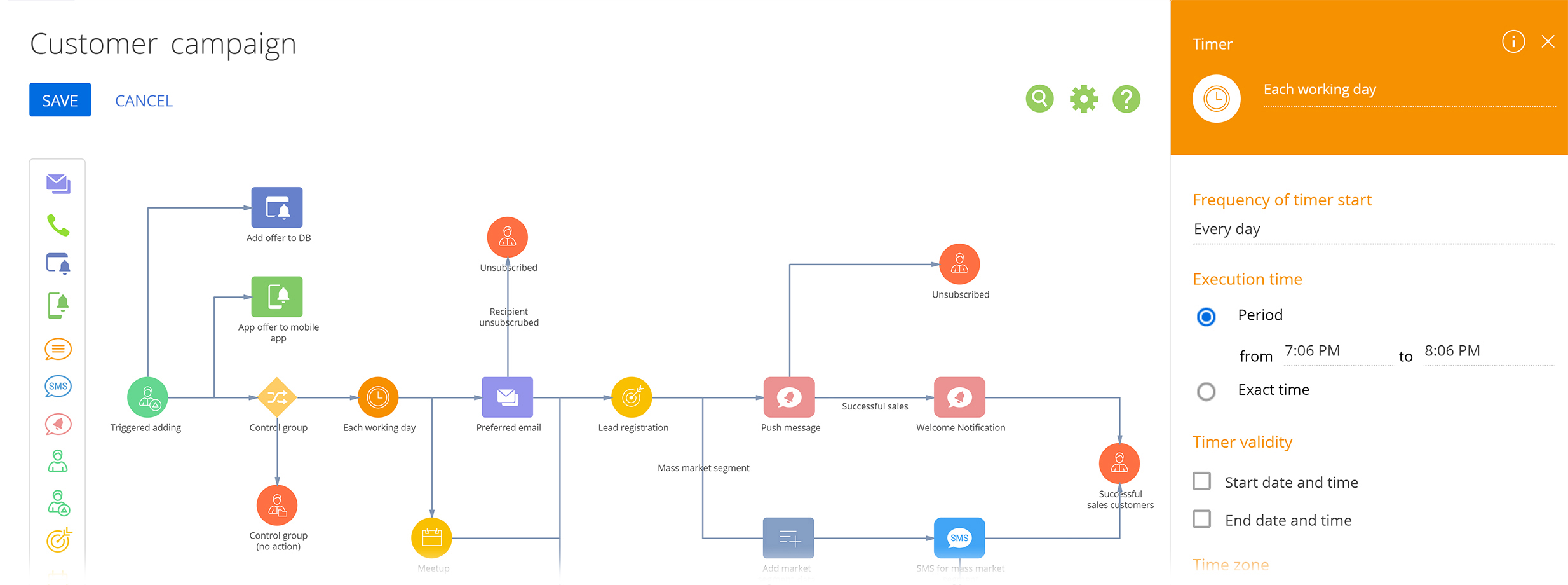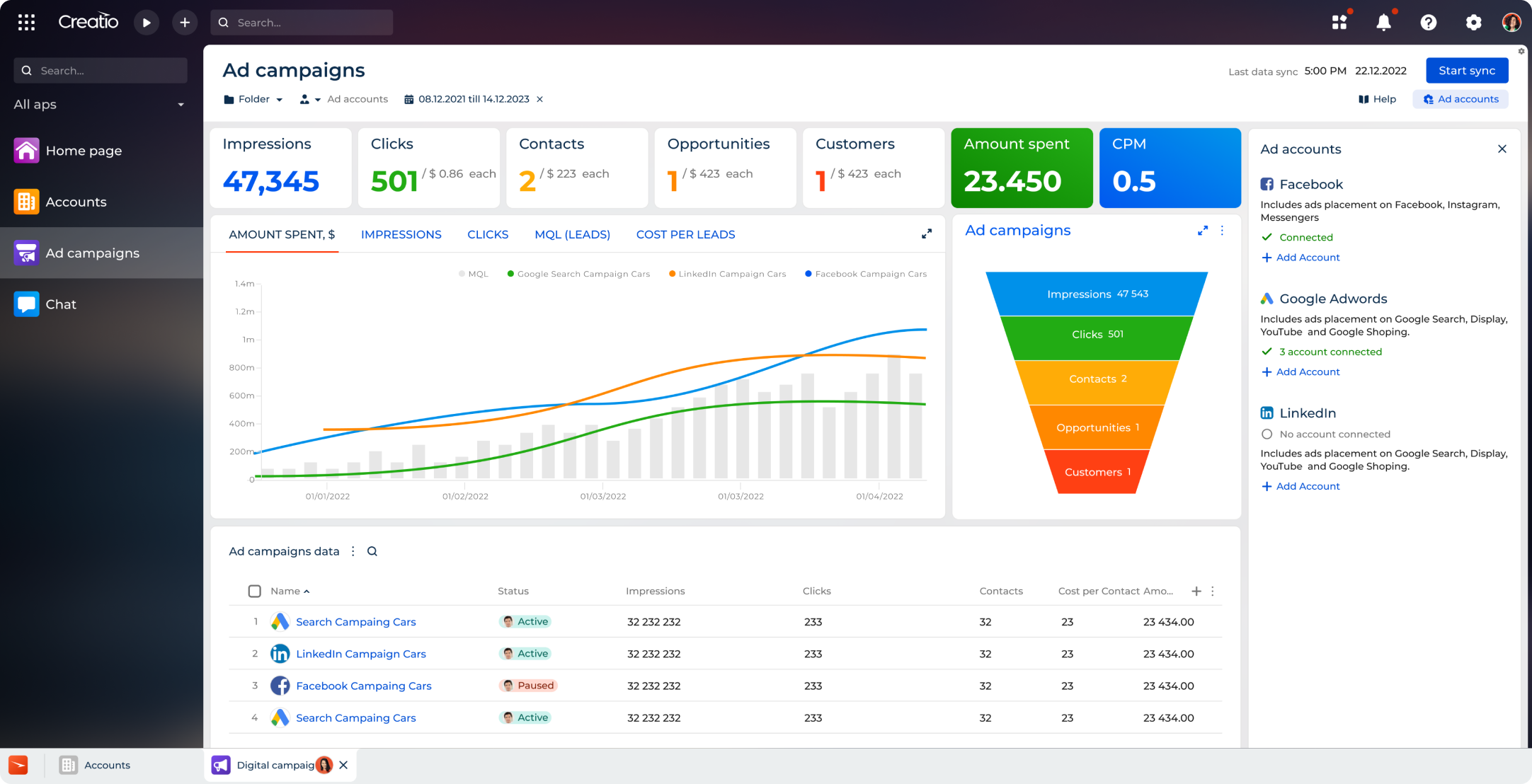Why Is a CRM Strategy Very Important and How To Create One?

Establishing strong long-lasting customer relationships is the primary goal for any business. To succeed in this endeavour, companies consolidate and streamline their customer-facing operations with the help of modern Customer Relationship Management (CRM) software.
However, software alone is not sufficient for successful CRM implementation. A holistic CRM strategy is necessary to integrate all the technical, organizational, and business elements. A well-defined CRM strategy helps address customer needs and expectations while maximising your business outcomes and ensuring an efficient digital transformation process.
In this article, we explain the key components of a robust CRM strategy and how to design one.
What Is a CRM Strategy?
A CRM strategy is the company's action plan to acquire, nurture, and retain customers. This strategy is based on thorough customer research, a compelling product narrative that highlights your unique value proposition, a deep understanding of the customer journey, and a CRM system that organises customer data and supports your marketing, sales, and customer service operations.
CRM strategy ensures that all your customer interactions are based on these components, thus, making them more consistent and satisfying for the customer.
What Is a CRM System?
A CRM system is a software application designed to help businesses manage their relationships with current and potential customers.
CRM systems assist you with a wide variety of tasks, the most common of which are:
- Consolidating customer data, such as contact details, communication history, and preferences.
- Tracking and managing the sales pipeline, assigning leads to sales representatives, and monitoring conversion.
- Audience segmentation, which enables marketers to design targeted campaigns and personalise brand communication.
- Managing customer support requests.
- Automating routine tasks, such as data entry, lead assignment, marketing campaign launch, and segmentation.
- Analysing customer behaviour, sales and marketing performance, and overall business metrics.
- Managing and automating your sales, marketing, and service processes, including (but not limited to) lead and campaign management, sales forecasting, pipeline management, and case registration.

Why Do You Need a CRM Strategy?
A CRM strategy serves as a foundation and guidance for all the interactions with your customers. Having this unified plan of action across an organisation optimises your internal work processes and provides a smoother customer experience. Thanks to this experience, customers are more likely to purchase your product and become your loyal advocates. Let’s get more specific and see how exactly a CRM strategy benefits businesses.
Benefits of a CRM strategy
A well-thought-out CRM strategy helps optimise customer interactions, thus bringing companies a number of benefits.
Driving better customer engagement and personalization
According to McKinsey, 71% of customers expect companies to deliver personalised interactions, and 76% get frustrated when this doesn’t happen. A CRM strategy always entails customer research, thus ensuring that you gather and analyse insights necessary for personalisation. This enables organisations to tailor their marketing efforts and sales interactions to resonate with each individual customer.
Moreover, a CRM strategy involves developing solutions and processes for customer data management. This facilitates access to customer data and gives customer support managers a deeper understanding of the interaction history, allowing them to resolve issues quickly.
Enhancing productivity and collaboration of your teams
A CRM strategy facilitates to exchange of information and insights between different departments by proposing a unified process of interacting with customers and logging these interactions. This enhances collaboration and accelerates business operations across the whole company.
Establishing a CRM strategy helps you discover opportunities for automation in your customer interactions and make use of them. In addition, CRM systems offer task automation features, allowing staff members to eliminate routine work and focus on more intellectually challenging tasks. For example, sales reps can automate follow-up emails and spend the time on engaged lead nurturing instead.
Empowering companies to choose the right software
Understanding your plan of action enables you to select the CRM system that perfectly matches your business operations. This allows you to allocate your automation budget wisely and avoid overspending.
Increasing profit
Since a CRM strategy drives better customer engagement and satisfaction, it positively impacts your conversion rates. Additionally, elevated customer satisfaction levels foster customer loyalty, further boosting profits by generating returning customers.
Optimising workflows and replacing a variety of tools for a unified CRM system leads to cost reduction and a higher profit margin.
How to Create CRM Strategy in 7 Steps
Crafting a CRM strategy requires a methodical approach. This plan guides you through the process step-by-step helping you to keep both your business objectives and customer preferences in mind.
Step 1: Determine your company’s goals
Begin designing your CRM strategy by anchoring it to your company's business goals. These can cover your financial, growth, or employee development objectives.
Here are some questions to help align your strategy with your goals:
- How can I increase the lead conversion rate?
- How do I reduce the average duration of the lead pipeline?
- What actions can help me improve the win rate?
- How can I grow my brand awareness?
Your goals will evolve as your business grows, so make sure to come back to this step from time to time.
Step 2: Identify your target audience
The key to customer satisfaction is the understanding of their desires and needs. When planning your sales, marketing, and service activities, you need to rely on audience research. This makes your customer interactions more effective and thereby increases the likelihood of successful conversion and retention.
One popular customer research tool is the customer persona profile. Also known as the buyer persona, it is a comprehensive profile of your ideal client based on hard data. Usually, it includes
- demographics, such as age and location;
- behavioural data;
- professional information, such as their role in the company;
- the relevant challenges they face,
- and their preferences and frustrations.

You can start building customer persona profiles by surveying your sales and support teams. Answers to questions like: “What pains do our customers have? What do they prioritise in our product? What problems do they solve with it?” can give you actionable points to include in the profiles.
Moreover, marketing and sales analytics show what kinds of people frequent your website and book demos and calls. Additionally, you can conduct surveys and interviews with your regular customers to capture their preferences.
Craft those buyer's persona profiles with care, and you’ll know precisely how to personalise your products, services, and messages. This clarity ensures your marketing efforts strike the right chord.
Step 3: Perform the market research
A comprehensive and research-driven market audit process sharpens your strategy. Conducting a market audit provides clarity on where you stand among competitors. Here's how to tackle it:
- Assess your market position and identify your unique selling points (USP)
- Analyse market trends to spot opportunities for growth
- Evaluate competitors' strengths and learn from their weaknesses
Consider how to leverage your USPs in response to market trends and competitors' moves
Step 4: Map out your customer journey
The next step is to construct the sequence of interactions that leads to conversion based on the insights gathered in the previous steps. For example, through customer surveys, you found out that a certain segment of your customers first heard of you through word-of-mouth, visited to your website, read testimonials, booked a call with your sales rep, and made a purchase. All these actions can be expressed through a customer journey map.
It visually represents all the interactions between your brand and a customer in chronological order and is used to make marketing and sales activities more productive.
There are 4 stages that are generally used to describe customer journeys:
Awareness: This is the first point of contact with your brand and how customers learn about it. During this stage, companies aim to educate customers about their businesses and offers.
Consideration: At this phase, customers consider the product’s benefits. The company’s goal here is to deliver valuable content explaining how products can effectively address customers’ challenges and lead them to conversion.
Purchase (also known as the decision stage): During this stage customers are deciding if they want to purchase your product or service. To ensure success, companies optimise their purchasing process, for example, by improving the website’s UI, providing clear pricing options, and training a competent customer service team.
Retention: Once customers purchase your product, ideally, they come back again and again. To maintain customer loyalty, companies continually engage with customers, ask for feedback, and supply them with valuable content.

Four-stage customer journey
Your customer journey map will look a little different, you may add additional stages and make the existing ones much more detailed, assigning specific actions and interactions to them, To help you draft your unique customer journey map, here are some tips:
- Identify early interactions. What ignites interest in your product? Is it an ad, a blog post, or a word-of-mouth recommendation?
- Pinpoint customers’ goals at each stage.
- Determine conversion actions. Does a discount tip the scale, or does it take several educational encounters?
- Tailor journeys to customer types. The path of a competent CEO is vastly different from a just-hired mid-level professional.
Once you have the map, analyse the weak points and find ways to improve your customer interactions.
Step 5: Design your messaging and value proposition
Revise your product narrative and elaborate on the value proposition. Clearly define the messages you intend to convey and underscore the benefits you offer.
Try to articulate reasons for customers to choose your brand over competitors and use them to implement best practice guidelines for customer communication.
Communicate these guidelines to your teams and conduct employee training to ensure consistency in messaging.
Step 6: Choose the right CRM system
Figure out what you need in a CRM system based on your goals and customer journey analysis.
Here are some questions to guide your decision:
- What will you use the system for? What features do you need to support your use cases?
- Is the system comprehensive? Does it cover all your customer relationship management needs?
- Is it customizable and scalable?
- Is it easy to use? Does it require extensive training for your employees?
- Does it work well with other tools that your company uses?
- How much time will it take to implement this software?
- Is it cost-effective?
When evaluating options, focus on finding a system that provides all the features needed to support your operations and ease of use.
Prior to committing, it’s also wise to conduct a pilot test with select employees who will be using software to ensure its functionality and user-friendliness.
Step 7: Train your employees
Properly preparing your employees is just as important as the software selection itself. As you implement the new system, organise training that teaches your employees how to utilise all the features. Showcase how exactly the CRM software helps accomplish your objectives.
Essential Features of a CRM System
While the choice of a CRM system should depend on specific requirements, certain universally applicable features are essential, as outlined in this list.
Lead management
To support marketing and sales activities, a CRM system should be able to:
- facilitate capturing and verifying leads,
- qualify them as marketing- and sales-ready,
- enable assigning leads to sales reps,
- analyse statistics on leads, such as the number and quality of the new leads, conversion rate, etc.
Campaign management
Enterprise-level CRM systems allow you to design and launch marketing campaigns and analyse those campaigns for the number of customer responses, generated leads, and conversions.
CRM systems also incorporate campaign automation. For example, Creatio can set up trigger campaigns that are launched as soon as a trigger event (such as filling out a website form) occurs.
Contact centre
A contact centre allows customer service agents to manage request queues, perform bulk communications, share information with each other, and monitor agent’s performance.
360° customer view
The Customer 360 view consolidates diverse customer data for seamless cross-team collaboration, allowing Sales teams to monitor pipeline status and Customer Service to access interaction history and reported issues. Marketing teams can utilise it to analyse a customer’s journey from start to finish and see the insights imperative for personalization.

The Customer 360 view in Creatio
For example, Creatio lets you segment customers based on their interactions and preferences, which allows you to build targeted marketing campaigns.
Business process automation
A CRM system can automate routine tasks, minimising human error and delays. Various events can be configured to trigger actions and workflows, such as automated follow-up emails after a demo.

Marketing campaign automation in Creatio
AI and machine learning
AI implementation in data analysis, such as sales forecasting and processing large datasets rapidly, highlight valuable insights. Additionally, AI aids in building automated workflows by recommending the next best actions.
Analytics and reporting tools
Not only do CRM systems help you organise and manage customer data, but they also utilise this data to gain valuable insights for your business strategy. For instance, Creatio offers a range of AI-powered analytics tools for CRM, including sales forecasting, campaign tracking, performance analysis, and more.

Ad campaign analytics in Creatio
Integration
Integration capabilities enable your CRM to connect with other business tools and systems (e.g., email, calendar, ERP) to ensure a seamless flow of information across the organisation.
Drive your business forward by implementing the right CRM strategy
As we come to a close, it is worth considering the immense potential that an effective CRM strategy can bring to business growth. Creatio CRM seamlessly integrates a robust CRM system with advanced no-code capabilities, business process automation, and AI and machine learning. This fusion empowers businesses with a versatile platform that not only manages customer relationships effectively but also allows for flexible customization, streamlined workflows, and intelligent data-driven insights.
If you aim to implement an error-proof strategy for your business, Creatio might be the solution you’ve been searching for. You can use the platform for all aspects of CRM, starting from cross-team collaboration and launching efficient marketing campaigns to enhanced customer experience and building a customer-centric business.






